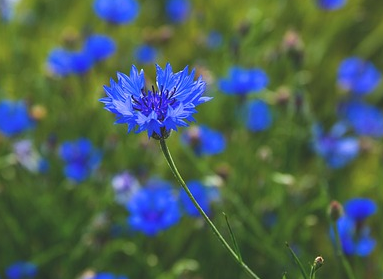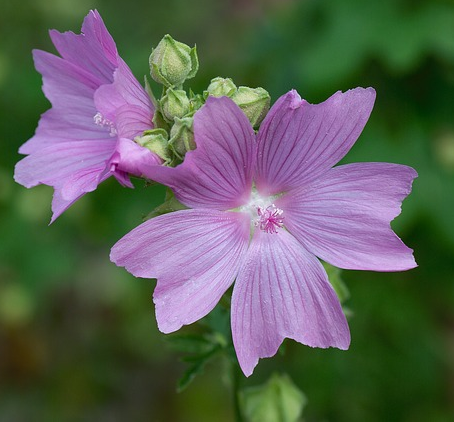One of our most precious assets: the Sight
Weather agents (light, humidity, etc.), using contact lenses, pollution, dust particles traveling in the air and many other daily actions can put a challenge on the eyes health. Generated problems can be more or less severe and lasting. Also spending many hours on the PC, as we while we are reading and writing posts on Steemit, has become an integral part of our lives. Social network, video games, work, study, we can not live without it!
However, ophthalmologists advise to take a break every 20/30 minutes from PC and smarthphones, it is difficult to leave the relation we are writing or the marathon of our favorite TV series. This routine action can cause adverse effects, one of which is called Computer Vision Syndrome (SVC).
This syndrome typically manifests itself after a prolonged and continuous period of permanence in front of a screen. Most of the screens we use today, such as LCD or LED, emit a blue light. This light causes oxidative stress on the retina, inhibiting melatonin(1) secretion and fatigue the eyes.
One of the main remedies is to reduce the hours spent in front of your computer and other things like lowering the screen illumination, maintaining good hydration, and keeping a good posture. To prevent SVC, or to treat milder eyes disorders, we can use natural remedies. Some active principles extracted from plants have been studied to treat more serious diseases, such as glaucoma.
One of the most common problems, eyes redness is caused by many factors such as climate, allergies or other. The use of collyrium is a typical pharmacopoeia remedy or, in the case of a bacterial infection, antibiotic-containing creams. In this case, you should contact your family doctor and being sure you are following the most appropriate therapy.
As we have said for lesser intensity we can use remedies, some of which I will talk to you below, that we can prepare at home:
• Chamomile (Chamomilla L. Matricaria), the part of the plant that is being used are dried flowers. Chamomile has good antinflammatory properties due to its matricin content, flavonoids (quercetin, lutein and apigenin) and essential oil components such as alpha-bisabolol, guaiazulene and camazulene.
After we have made a herbal tea, we can directly apply the used filters on the closed eye, while the infusion can be used as an eye washings. Chamomile helps to remedy redness and tiredness of the eyes.

Figure 2: Chamomile flowers (source image: pixabay and modified by me)
• Blueberries (Vaccinium myrtillus), which is used to maintain the health of the optic nerve, thanks to its high content in Vitamin A and anthocyanosides (mirtillin), as well as flavonoids, pectins, vitamins C and tannins. It is used as a dry extract titrated to 25% in anthocyanosides, which act as antioxidants and therefore a capillaries protector, with two intakes in the morning and evening, with empty stomach. It can also be taken during pregnancy and during lactation.

Figure 1: in the pictures is depicted the plant with blueberries attached (source image: pixabay and modified by me)
• Cornflower (Cyanus segetum) is useful for treating tired eyes and conjunctivitis, but also in case of allergic rhinitis, to reduce inflammation. On the market there are several products containing this plant: collyrium, distillates, infusions. If you want to make it at home, you will need to bring water (possibly distilled) and boiling it and dip a few flowers for about 15 minutes. I advise you to do small quantities, keep it in the fridge and use it for up to 2/3 days.

Figure 3: Cornflowers (source image: pixabay and modified by me)
• Ginkgo Biloba, this plant originated in China and Japan, is rich in flavonoids and diterpenes, is used in phytotherapy to improve blood circulation, especially the inflow of blood to the brain and thus positively affects memory. In addition to these properties, Ginkgo seems very useful also in the prevention and treatment of glaucoma(2) due to its neuroprotective properties, but further research must be aimed at ensuring the data obtained. According to some clinical studies conducted by several research groups, Ginko intake is effective in improving blood flow in the ophthalmic artery and reducing retinal vascular degeneration. Ginkgo should be avoided if anticoagulants are used, such as warfarin, as they interfere with their metabolism.

Figura 4: leaves of Ginkgo Biloba (source image: pixabay)
• Mallow (Malva Sylvestris), the parts of this plant used in phytotherapy are the flowers and leaves. Mallow, which contain precious substances such as mucilage, is used for various disorders such as respiratory system inflammation and intestinal irritation. The mucilages are able to absorb water and, by releasing it, hydrate the tissues and relieving irritation and burns. Mallow's preparations can be used as eye washings, directly in the eyes. Infusion of Mallow can be obtain leaving the flowers and leaves of the plant infused for up to 5 minutes. If we leave infusions for too long, we make the preparation too concentrated in mucilages and could give the opposite effect to the desired one. Often, I use Mallow in combination with other plants, such as chamomile, to enhance its effects. It is advised not to take it during pregnancy, breast-feeding or if you are taking drug therapy, without medical advice.

Figure 5: Flowers of Mallow Plant (source image: pixabay and modified by me)
Lastly, I would like to talk about vitamins. They are useful in maintaining eyes health but, they must be taken continuously for long periods of time to obtain a beneficial effect. It is intuitive that with the diet alone, the necessary doses can not be achieved and maintained:
• Vitamin A, its deficiency is associated with a reduction in visual abilities, especially the night vision.
• Vitamin C or Ascorbic Acid, acts against free radicals because of its antioxidant proprieties, reduces the risk of developing degenerative diseases and fighting infections.
• Vitamins E or Tocopherol, strengthens ocular muscles, helps prevent blurred vision, has an antioxidant action to combat oxidative stress and thus the development of macular degeneration (3) or cataracts.
• Group B vitamins, whose deficiency can cause photosensitivity, ocular muscle paralysis, burning, itching, tearing. The intake of folic acid and vitamins B6, B12, reduce the likelihood of developing macular degeneration.
Bibliography:
http://www.utifar.it/uploads/model_5/fitoterapici_utili_nei_disturbi_oculari.pdf
" Malattie dell’Apparato Visivo" by Carlo Sborgia and Nicola Delle Noci (290 pages), July 2004. Piccin Editore.
Notes:
(1) Melatonin is a hormone produced by the pineal gland and affects sleep-wake rhythm. Inhibition of its secretion causes typical symptoms of computer vision syndrome such as sleeplessness and sleep disorders, as well as eye fatigue, eye dryness, headache, blurred vision, and head traumas.
(2) Glaucoma is a disease resulting from the damage of the optic nerve, which leads in a loss of visual field caused by an increase in the eye’s internal pressure.
(3) Macular degeneration is a multifactorial pathology involving the macula, the central area of the retina. It can cause loss of central vision irreversibly
Excellent post with some good herbal information! 😊
Another way to help reduce eyestrain, too, is to toggle the computer into "Night Mode" on sites that have such. On Steemit, users can click on their own avatar icon in the upper-right of the screen and select "Toggle Night Mode" to activate it.
Thanks for your great advice! :)
Congratulations @farmacistasmz! You have completed some achievement on Steemit and have been rewarded with new badge(s) :
Click on any badge to view your own Board of Honor on SteemitBoard.
For more information about SteemitBoard, click here
If you no longer want to receive notifications, reply to this comment with the word
STOPThis post has been ranked within the top 50 most undervalued posts in the second half of Nov 28. We estimate that this post is undervalued by $22.17 as compared to a scenario in which every voter had an equal say.
See the full rankings and details in The Daily Tribune: Nov 28 - Part II. You can also read about some of our methodology, data analysis and technical details in our initial post.
If you are the author and would prefer not to receive these comments, simply reply "Stop" to this comment.
Congratulations @farmacistasmz! You have completed some achievement on Steemit and have been rewarded with new badge(s) :
Click on any badge to view your own Board of Honor on SteemitBoard.
For more information about SteemitBoard, click here
If you no longer want to receive notifications, reply to this comment with the word
STOP